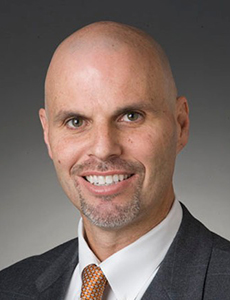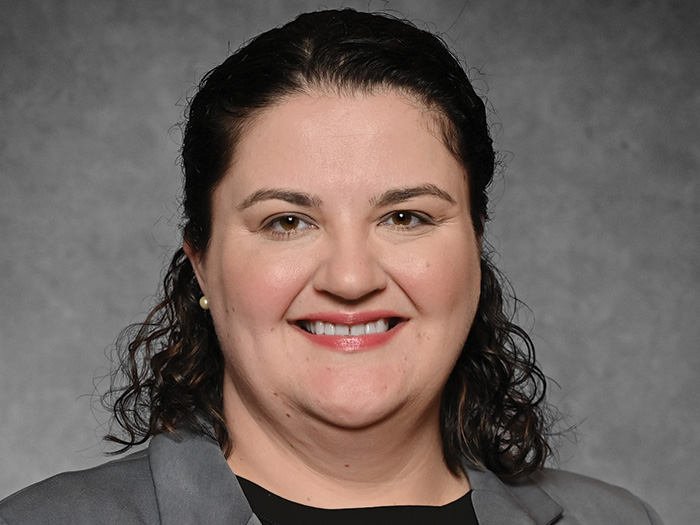Sponsored Content by Concentra
Seeing the Bigger Picture: Three Misconceptions About Physical Therapy in Workers’ Comp

According to 2015 Bureau of Labor Statistics data, musculoskeletal injuries accounted for 31 percent of occupational injures requiring days away from work, nearly 360,000 cases annually. Treating occupational related musculoskeletal injuries can be complex because the injury itself is generally diagnosed via a complex combination of thorough history, understanding the mechanism of injury, objective clinical exam findings, and intermittent use of diagnostic tests. The additional challenge is the range of signs and symptoms associated with common diagnoses and ICD-10 coding (International Classification of Diseases, 10th edition). For example, a diagnosis of an ankle sprain may range from a mild twist of an ankle to partially or fully torn ligaments of the ankle. The range of severity and acuity inherent in the diagnosis leads to challenges in understanding the complexity of the injury and, more importantly, the optimal management of the injury and functional restoration of the injured worker.
Due to the variability of symptoms inherent in musculoskeletal injuries, some employers and treating physicians choose to take a “wait and see” approach first, delaying active physical therapy treatment in hopes that resting at home and assistance of over-the-counter medication will do the trick. However, according to research (Phillips and Shoemaker, JOEM 2017), this method often causes more problems than it solves, specifically driving up clinical costs and extending case duration.
“Occasionally, employers and/or payers may have concerns regarding physical therapy utilization because it can be viewed as a cost driver for workers’ comp claims,” said Giovanni Gallara, Senior Vice President, National Therapy and Ancillary Services Director, Concentra Occupational Health. But when implemented correctly, physical therapy as a first-line treatment for musculoskeletal injuries often results in less time away from work; faster return to function; lower utilization of medications, specifically opioids; and decreased need for costly diagnostic and specialty intervention. (Liu et al., PTJ 2018)
“All of this leads to lower costs for payers and employers,” said Peter Deziel, Vice President of Rehabilitation, Concentra Occupational Health.
Concentra explores three major physical therapy misconceptions and suggests how to best leverage and evaluate therapy to implement a best-in-class workers’ comp program to drive optimal outcomes:
1) Misconception One — “Wait and See” Keeps a Cap on Costly Physical Therapy Treatment

Giovanni Gallara, Senior Vice President, National Therapy and Ancillary Services Director, Concentra Occupational Health
When treating physicians send an injured worker home to rest without physical therapy consideration, they could be setting their patient up for failure by fostering a “disability mindset.”
“A patient who is at home and in pain may feel no one’s looking after them. Due to the perceived lack of clinical care and perception of pain, the injured worker may ask for stronger prescriptions or costly diagnostic tests to understand the source of their pain and ultimately how to get relief. By the time the patient begins rehab, they may already feel they’re disabled and could be frustrated by the lack of treatment activity. This person is much harder to rehab,” Gallara said.
Mental status and patient outlook play a major role in recovery. When individuals believe they will never return to full function because of a work-related injury, it can become a self-fulfilling prophecy. Conversely, when a clear-cut active treatment plan is immediately delivered, many patients experience far better outcomes (Linz et al. 2002 JOEM)
To lay the foundation for a positive outlook, the first step is to communicate with the injured worker that pain perception is not always correlated with tissue damage or loss of function, and to explain how movement promotes the recovery process.
“It’s important to educate injured workers that while there may be some pain associated with movement, it’s part of the healing process. Staying immobile leads injury into disability, both physically and from a biopsychosocial aspect,” Gallara said.
When an injured worker experiencing a musculoskeletal injury is immediately sent to rehab, there is detailed education provided on the recovery process and expectations, reinforcing proactive treatment to generate a positive outcome and shift the focus from pain to function. Early intervention promotes psychological as well as physical recovery, and often mitigates the need for pharmaceutical intervention, costly diagnostics, and potentially downstream surgical interventions (Sun E, Moshfegh J, Rishel CA, Cook CE, Goode AP, George SZ, JAMA 2018).
2) Misconception Two — Compartmentalized Care Controls Total Case Cost

Peter Deziel, Vice President of Rehabilitation, Concentra Occupational Health
In occupational medicine, employers and/or payers may look for cost-saving opportunities through compartmentalization of clinicians by picking and choosing non-integrated clinicians to manage transactional or per visit costs. While this may reduce the per-unit cost of care, it ultimately can create discontinuity of care, add to case durations, delay recoveries, and increase administrative costs to manage a mosaic of clinicians spanning primary care, specialty, and therapy services. These workflow inefficiencies, lack of clinical continuity, and delays in care drive lower patient satisfaction and increase indemnity, clinical, administrative, and total case costs over time.
Lack of clear communication between physicians and physical therapists, for example, could lead to unnecessary diagnostic testing. Often, a therapist can assess and successfully treat an injury without the need for diagnostic testing. Physician and therapy clinical collaboration is key to ensuring patients are receiving evidence based early intervention to optimize outcomes for patients with musculoskeletal injures.
Research has shown that asymptomatic individuals often will demonstrate positive findings in MRI (Schwartzburg, et al. OJSM 2016). “Unfortunately, once you snap an MRI and give a person an image of degenerative changes or partial tears, it often reinforces the perception of disability or inability to resume full function until the structural ‘damage’ is repaired, which can have consequences for recovery,” Deziel said.
Ideally, the physician and physical therapist work closely together, under one roof, collaborating to deliver evidence based early intervention when appropriate to optimize patient outcomes. For example, after the physician’s initial exam of an injured worker, the physician could walk the patient back to physical therapy and explain clinical findings to the therapist. The patient is integrated into the discussion and is witness to both clinicians collaborating and communicating toward an optimal treatment path, all with the patient engaged in the process. The injured worker could then begin rehab that same day to initiate the recovery process with confidence and clarity.
“You can really avoid the unnecessary use of diagnostics, pharmacy, and other costly interventions just by having more integration between physicians and rehab professionals on the front end. When managing musculoskeletal injuries in workers’ comp, strong clinician collaboration delivers better outcomes,” Deziel said.
Finally, close collaboration between therapy and medical clinicians can assist with rapid case closure once a patient achieves functional goals. For example, if a patient is prescribed six therapy visits, but meets all functional goals in four visits, the physical therapist can communicate in real time with the referring physician of goal achievement, walk the patient over for a final medical recheck, and potentially close the case immediately. There would be no need for the patient to finish out the last two therapy visits and attend a previously scheduled medical recheck in the future.
3) Misconception Three — Expertise in Occupational Medicine is not Essential to Manage Workers’ Comp Cases
One of the key differences between group health care and workers’ comp is the end goal of treatment. In workers’ comp, the ultimate endpoint is return to work and maximum occupational recovery and prevention of future disability. The same may not be true for a non-occupational medicine-based therapist, who may not have the same focus on incorporating essential job functions into the recovery plan and design a treatment plan specific to the environmental factors of the worker.
 Take a warehouse worker who must be able to lift 75 pounds for his job and just suffered a back strain that renders him barely able to bend over. A therapist with expertise in occupational medicine might determine the worker is able to life 10 pounds and make an appropriate recommendation to the physician to adjust the work restriction to allow light or transitional duty, initiating that first step for the return-to-work process. A therapist without such expertise might not take this step, keeping the worker away from the job, and preventing a very tangible step toward regaining a sense of usefulness and progress.
Take a warehouse worker who must be able to lift 75 pounds for his job and just suffered a back strain that renders him barely able to bend over. A therapist with expertise in occupational medicine might determine the worker is able to life 10 pounds and make an appropriate recommendation to the physician to adjust the work restriction to allow light or transitional duty, initiating that first step for the return-to-work process. A therapist without such expertise might not take this step, keeping the worker away from the job, and preventing a very tangible step toward regaining a sense of usefulness and progress.
Bureau of Labor Statistics reports nearly 33 percent of injured workers are associated with lost time from work. “In instances where a medical practice is only sporadically managing worker’s comp cases, the likelihood of driving lost time and not fully understanding causation and OSHA recordability can lead to costly case management,” Gallara said. “When clinicians specialize in occupational medicine, on the other hand, lost time ranges between 5-10 percent of cases vs. the 33 percent national average. There’s a huge emphasis on promoting transitional work duty, expediting return to work in a safe manner, and preventing future disability all while engaging key partners in the workers’ comp ecosystem.”
What to Look for in a Physical Therapy Partner
Look for a physical therapy partner that collaborates in real time with medical clinicians to treat occupational musculoskeletal injuries via an appropriate early intervention evidence-based model. Understand the therapy providers primary patient population and determine treatment philosophy relative to early intervention, return-to-work planning, and long-term worker health promotion and occupational injury outcomes. Know how your therapy provider tracks metrics and whether those metrics are specific enough to help manage key occupational medicine cost drivers.
For employers and payers concerned about high physical therapy referral rates, Gallara noted, “the metric should spark a closer look at what’s driving injuries in the first place, rather than focusing solely on reducing therapy utilization. If a therapy partner is practicing evidence-based care, utilization should remain constant assuming the worker population has not changed. If therapy utilization is creeping higher, it may be time for evaluation of factors such as low employee engagement, high turnover, changes in the work environment, forced overtime, aging workforce, etc. and the impact on their injury rates and recovery.
“It’s very important for employers and clinicians to partner to understand what’s happening from a workplace environment and safety standpoint as well as what workplace factors may be contributing to changes in therapy utilization,” Gallara said.
“At Concentra Occupational Health, 95 percent of our patient population is occupational medicine, so our colleagues are dedicated to caring for individuals who have suffered a workplace injury,” Gallara continued. “We have more than 850 therapists and well over 1200 medical clinicians who work in-house, as well as more than 600 contracted specialists who collaborate with our core clinicians to manage more clinically complex occupational injuries.”
“All three – the medical clinician, therapist, and the specialist are communicating together in real time,” Deziel added. “Because we have all these clinicians under one roof, we’re able to deliver coordinated care across the continuum while we concurrently engage the employer to generate the best outcome. We’re one of the few practices nationally that actually has an integrated care delivery model specifically focused for workers’ comp patients.”
To learn more, visit https://www.concentra.com/physical-therapy/.
This article was produced by the R&I Brand Studio, a unit of the advertising department of Risk & Insurance, in collaboration with Concentra. The editorial staff of Risk & Insurance had no role in its preparation.










